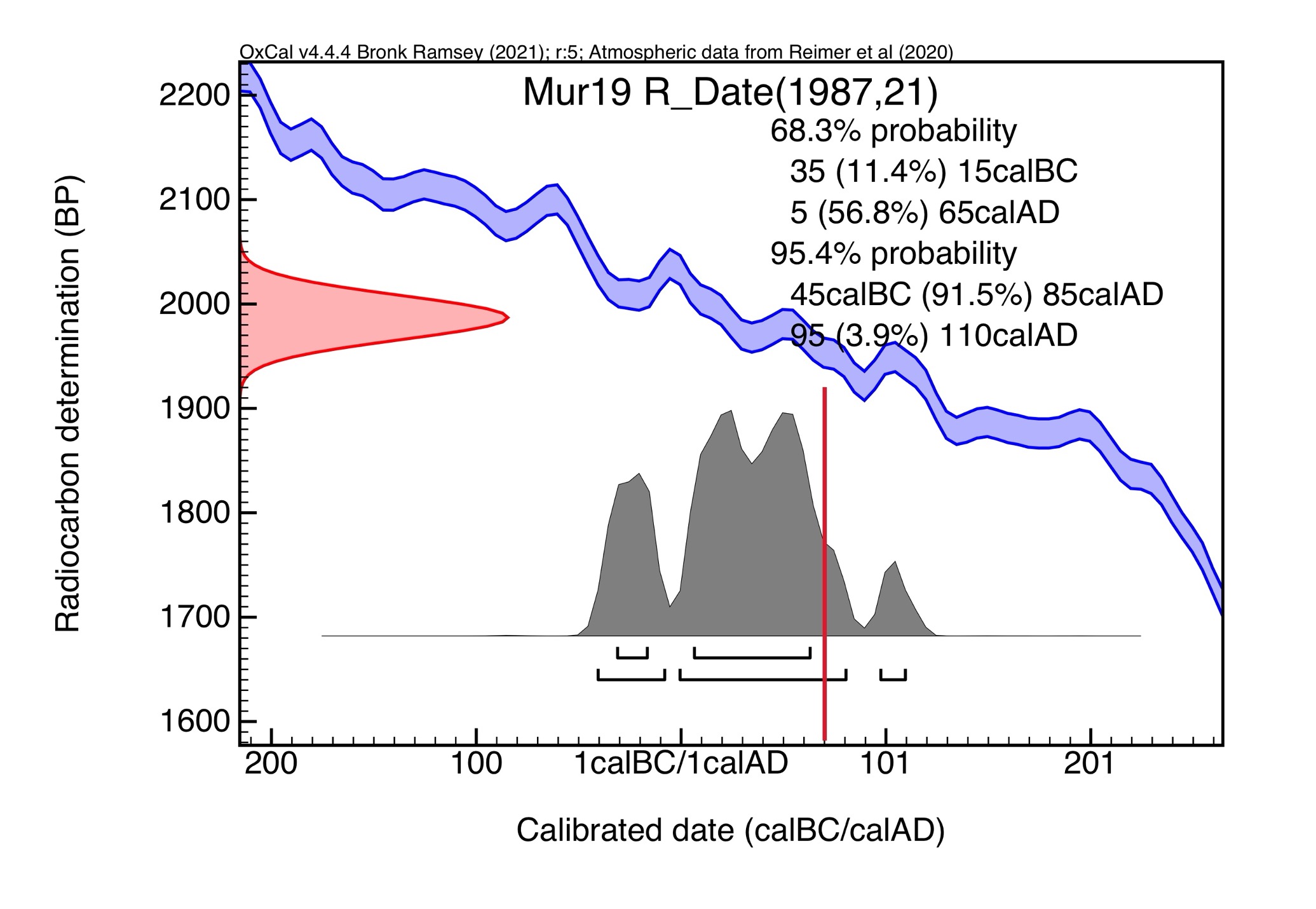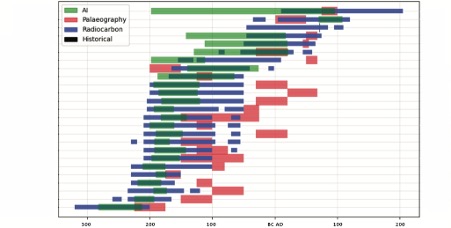CIO Newsletter: Dead Sea Scrolls
As everybody will have noticed, the Dead Sea scrolls project received quite some attention in the news. Most of the present staff was not at the CIO when the samples came through the 14C lab, that was about 8 years ago. The subject deserves a few words for the newsletter. Also not everyone will know what these scrolls are about. In short, the Dead Sea scrolls is a collection of various texts, written between roughly 300 BC and 70 AD. They include texts of the Old Testament and were hidden in caves near Qumran (located at the Dead Sea) during the war between ancient Israel and the Roman empire.
It is famous world heritage (with scientific, religious and political aspects). A project granted by the ERC concerns handwriting analysis by AI, for which scientific dating is needed. This required the expertise of 3 groups, all present at our university: the Qumran Institute, Faculty of Religion, Culture and Society (prof. Mladen Popovic, principal investigator); ArtificiaI Intelligence, Bernoulli Institute, Faculty of Science and Engineering (prof. Lambert Schomaker) and of course CIO, also FSE (many of us).
For more information on the project see: https://www.rug.nl/about-ug/latest-news/news/archief2025/nieuwsberichten/dead-sea-scrolls-older-than-previously-thought.
Detailed mathematical aspects of the AI part can be found in the PhD thesis by Maruf Dhali (2024) which is available via the RUG library. Here we focus on the Radiocarbon dating part. The results are now published, which is the reason for the recent media attention. The article can be found in the journal PLOS-one:
Mladen Popović, Maruf A. Dhali, Lambert Schomaker, Johannes van der Plicht, Kaare Lund Rasmussen, Jacopo La Nasa, Ilaria Degano, Maria Perla Colombini, Eibert Tigchelaar, Dating ancient manuscripts using radiocarbon and AI-based writing style analysis, available at
https://journals.plos.org/plosone/article?id=10.1371/journal.pone.0323185.
The ERC project concerns 30 scrolls. These are available for the AI part; they are scanned in very high resolution (and at several wavelengths). But Radiocarbon is a different matter: the method is destructive and requires sampling of these unique materials. The 30 scroll samples were delivered in 3 separate batches; 2 sent by the Dutch embassy using diplomatic mail, 1 personally collected in Jerusalem. Regular transport by a courier was impossible because it could not be insured, we were told. Remarkable because all we got was a few scraps of material without text on it. Earlier, in 2015 Mladen and Hans went twice to Jerusalem, armed with sampling tools - but that was not considered a good idea by the museum staff...
Such samples in the lab cannot be treated as "standard measurement" for a variety of reasons. Not just because the world is watching. The samples were small, and could not be treated by standard pretreatment protocols because the material was very delicate, and would dissolve within minutes. In addition, it is known that in the early days some scrolls were treated by a preservative known as castor oil, which is difficult to remove. Earlier research showed that castor oil could be removed by a special cleaning procedure known as soxhlet, see our articles: K.L. Rasmussen, J. van der Plicht et al., The effects of possible contamination on the Radiocarbon dating of the Dead Sea Scrolls: Radiocarbon 43, 2001, 127-132 and Radiocarbon 51, 2009, 1005-1022.
The procedure we applied for sample pretreatment was as follows: 1. cleaning by soxhlet in Odense, Denmark (prof. Kaare Rasmussen), 2. checking this pre-cleaned material by advanced analytical chemistry in Pisa, Italy (prof. Perla Colombini), 3. Acid-only treatment in Groningen using diluted acid at low temperature for times considerably shorter than usual.
Radiocarbon dating itself was also a challenge; the batches arrived during the time CIO moved from Nijenborgh 4 to the Energy Academy. The first samples were dated by the old AMS (GrA), the majority subsequently by the Micadas (GrM). A few larger samples were dated by both machines, which is also a usefull intercomparison experiment.
In the end we obtained 28 dates by GrA (using graphite, incuding duplicate runs; 12 GrA numbers), and 110 GrM runs (using the gas source, and including a few test samples). For the 30 scrolls analysed, the project resulted in 24 accepted reliable dates.
One scroll known as Mur19 proves that the 14C dates are reliable. It is the only one with a known historical date; it carries the words "year 6 of Masada" which is interpreted as a reference to the first Jewish revolt against Rome in 71/72 AD.
The 14C date is 1987±21 BP (averaged value for 4 GrM runs). This corresponds with 45 BC - 85 AD and 95-110 AD (rounded to 5) after calibration; see figure 1. This is indeed in agreement with the historical date, which is indicated by the red line. To be clear, we were not told the historical age before the measurements.

In the PLOS-one article the complete details of the Radiocarbon story can be found in the extensive supplements S2, S3 and S11. The final results of the project are summarized in figure 2. The historical scroll (figure 1) is shown (the small black vertical line, third from the top). For the other scrolls, the dates shown in red are the time periods assessed by palaeograhy (the study of old handwritten texts); the calibrated 14C date ranges are shown in blue, and the dates determined by AI in green. The main conclusion is that the objectively dated scrolls are in general older than the palaeographic assessments, which are based on comparing writing styles.
For the many more details of what it all means one is referred to the article.

